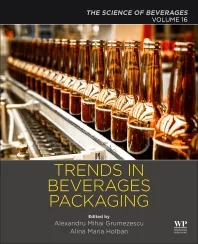Distribution
Propane finds its lane in beverage delivery
A propane proponent’s case for autogas

Electric vehicles seem to take up most of the oxygen in the room any time someone mentions alternative fuels, but let’s not forget that there are other options — some of which might be more viable for some delivery applications than others. Among those is propane autogas, which has a number of advantages going for it.
Stephen Whaley, director of autogas business development for the Propane Education & Research Council (PERC) makes a case for the fuel, specifically in the medium-duty, Class 3 through 7 space.
“Although I can make any spark-ignited engine run on propane, that doesn’t mean I should for light-duty vehicles that travel short distances every day,” Whaley says. “[Light-duty vehicles] are tremendously suited for electrification … and I’m not going to touch that with propane.”
Propane also isn’t ideal for trucks on the opposite end of the spectrum, heavy-duty vehicles. “I don’t have an engine solution for that today, so I’m not going to play in that sandbox,” he says.
But for that medium-duty sweet spot (which is where much of a typical beverage fleet resides), Whaley offers four significant reasons why beverage fleet managers might want to give propane a try.
1. Cost Savings
“No one likes to say it out loud, but I’ll do it,” Whaley says. “It’s money. Everyone wants to talk about the environment, but you can’t be environmentally sustainable until you’re first financially sustainable.”
Not only is propane a cleaner burning fuel than diesel, it’s considerably cheaper. Currently, Whaley says, the national average for a gallon of propane is about $1.60.
2. Eco-Friendliness
Now that we’ve addressed financial sustainability, it’s time to talk about the environmental kind.
For one thing, propane doesn’t have the particulate matter that other fuels do, so the engines don’t require the particulate filters that diesel engines do. Not only is that good for the environment, Whaley argues that it’s good for the bottom line.
“All of the after-treatment that’s on a diesel engine for it to meet regulatory [mandates] is extremely expensive, and propane is so clean that we’re able to meet all of those regulations without any of the exhaust after treatment.”
Currently, the industry is subject to 2010 regulations that cap NOx emissions at 0.2. In 2024, the amount of allowable NOx will drop to 0.05.
“The amount of equipment necessary [for diesel engines] to meet that is huge, and thousands and thousands of dollars more,” Whaley notes. “In 2027, it’ll drop to 0.02 and we already meet that today.”
Fueling infrastructure for propane already exists in most parts of the country, including the most rural areas. “We already live in the most remote areas of the country,” he explains. “We do chicken farms, we do grain drying, and we have energy storage in all of our areas.”
But it’s not just in the country. Urban areas have access as well. For instance, San Diego fuels hundreds of vehicles in its transit fleet with propane.
3. Noise Reduction
“These engines are super quiet,” Whaley says. So quiet, he says, that when the fuel was deployed for student transportation, parents got angry that their kids kept missing the school bus because they couldn’t hear it coming.
4. Available Infrastructure
Currently 30 billion gallons of propane is being produced in the U.S., with 20 billion gallons for domestic use and 20 billion gallons for export.
“Our transportation demands 40 billion gallons of diesel a year,” Whaley points out. “So if you want to take the ‘king of the hill’ [diesel] down and replace it with something, you’ve got to have enough energy to do that. Right now, I can replace half of the diesel in transportation now without lifting a finger. All we have to do is stop exporting.”
Looking for a reprint of this article?
From high-res PDFs to custom plaques, order your copy today!







